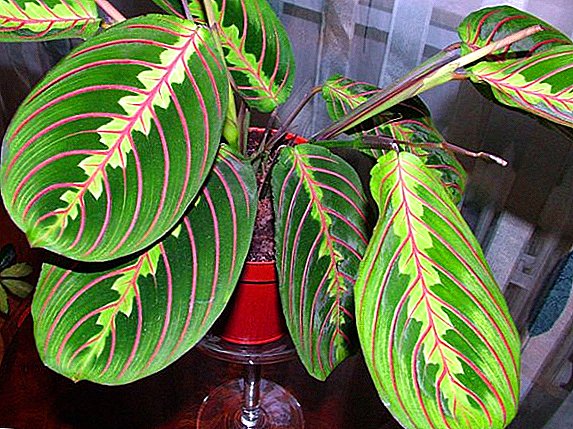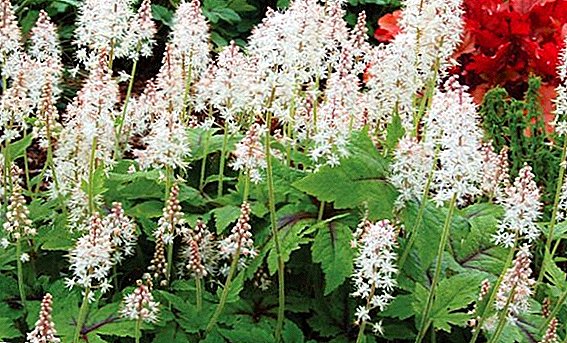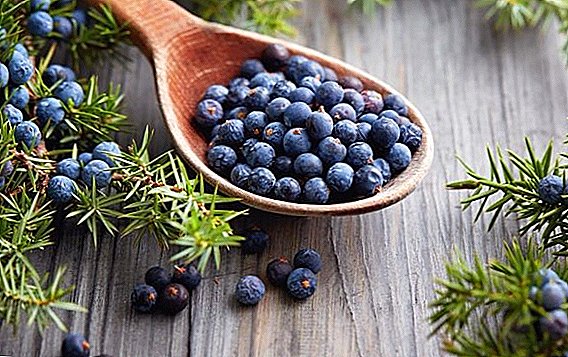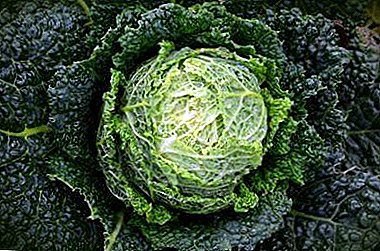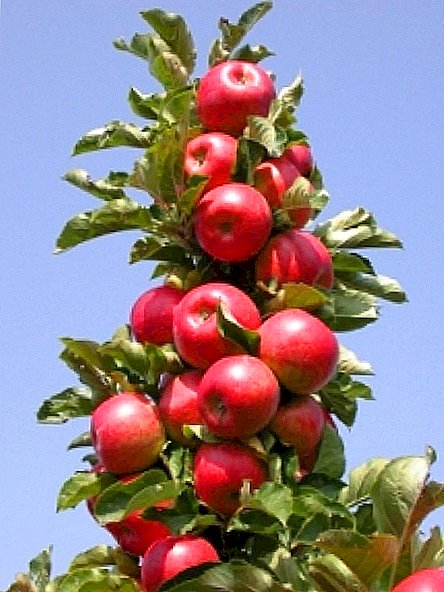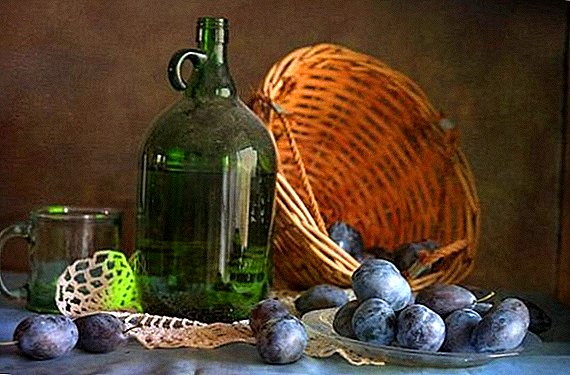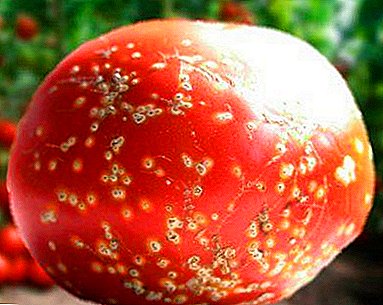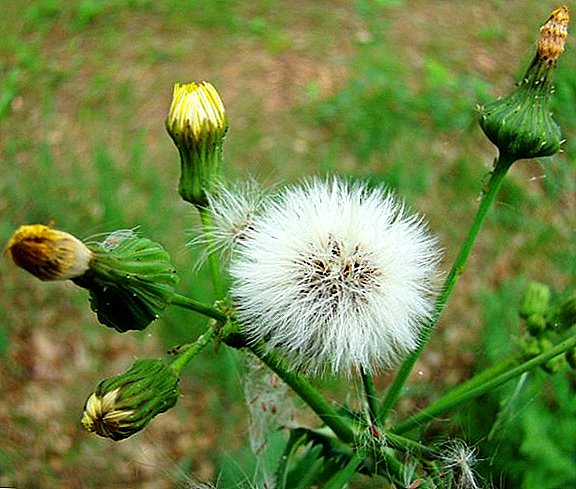 A thorny plant with yellow flowers, thickets of which are found along the banks of rivers, in forest glades and in fields, is well known to all gardeners and gardeners. Most perceive it as a weed, from which you need to quickly get rid of.
A thorny plant with yellow flowers, thickets of which are found along the banks of rivers, in forest glades and in fields, is well known to all gardeners and gardeners. Most perceive it as a weed, from which you need to quickly get rid of.
However, this plant has a lot of advantages. Any beekeeper will confirm that cesspit honey is one of the best, traditional medicine has long used the medicinal properties of "weed", and folk culinary traditions contain recipes of interesting and useful (especially after winter) dishes. Sow thistle can be useful to everyone, but for proper use it is necessary to know its useful properties.
Did you know? In Europe, there were notions of blackfall as a miraculous plant that has supernatural properties. It was believed that bathing the patient in his broth can heal almost any disease. In Poland, it was believed that the thunderbolt protects from the evil eye or witch witchcraft, and relieves fear. East Slavic folk traditions associated thieves with evil spirits. Thus, the legend is preserved, according to which, when God endowed people with useful plants, Satan demanded something for his help in creation. God gave him an oat, but the apostles Paul and Peter did not want to deprive people of such a useful plant and arranged it so that Satan would forget the name “oat” and “remember” the sow thistle. And now the devilry sows thistles among wheat and rye, waves its seeds in gardens and orchards.
Osot: description
Osot (lat. Sónchus) - A group of herbaceous annuals and perennials that belong to the Aster family. The genus Osota includes more than 70 species of plants. 
Their common generic features are:
- 0.5-1.8 m - height;
- the vertical root, which lies to a depth of 4 m, and the horizontal roots, located in the upper layers of the soil up to 50 cm, form a dense root system;
- erect stem, slightly spiney, with lignified base. The stems are branched, glabrous or with a glandular edge of spiny hairs;
- leaves with spiny green edges differ in shape - cirrus, lobed, dissected, etc .;
- in June, small-flowered yolk flowers bloom (grow in baskets with a wrap at the base). Flowering ends in October;
- seeds (6500 in one plant) with a tuft of fine hair, easily transferred by wind, do not have a rest period.
Sosot was widely spread in Eurasia (and also was brought to North America and Australia).
Most often in the middle lane are found:
- field sow thistle (S. Arvensis), yellow, milkweed - the description of the appearance largely coincides with the general code. Of the features - a perennial plant up to 1.8 m. The inner side of the leaves is dull, the outer - dark and shiny, the leaves are prickly, rough, with jagged edges. Pivotal and lateral roots with a large number of buds are developed. The flowers have a golden yellow color, bloom with many-flowered baskets in June-October. In a sosom field, the healing properties are most pronounced;

Important! Osote - root-plant (it propagates primarily by root suckers). When weeding, the remaining pieces of roots (at least 3 cm) in the ground give life to new plants. Reproduction also occurs with seeds that can be in the ground and wait for a favorable moment for up to 20 years. Thanks to its vertical roots, the plant has access to deep-lying minerals. Ground thistle - valuable mulch, thanks to which garden plants get nutrients.
- thistle garden (S. oleraceus), or rabbit salad, milk jug, tragus and others, grows to 1 m (annual plant). Stem - with burgundy shades, bare and hollow, more branched. Leaves are saturated green color, long, juicy and soft. The shape of the upper and lower leaves is different: the first - with the antennae, the second - lyre. It blooms from July to September with yellow flowers in a panicle (spines on the pedicels). Young stems and leaves are edible.

Chemical composition
Thistleship is of no commercial interest either for animal husbandry as fodder or for official medicine as a medicinal plant. Special scientific research sosom not conducted.
Nevertheless, scientists have identified a number of useful elements in sedge:
- ascorbic acid, alkaloids, carotene (most of them are found in the aerial parts of the plant);
- fatty oils, saponin, tartaric, oxalic, lactic, malic and other acids, tannins (stem, leaves);
- choline, inulin (most of all in the roots);
- light narcotic compounds (in leaves, stem, flowers);
- rubber (in juice), etc.
Thanks to these substances, thief is of interest to traditional medicine.
Important! Harvesting thistle needed during its flowering. The collection at this time to be leaves and shoots. To dry the collected material should not be in the sun, in one layer, on a canvas or grid (so that there is a flow of fresh air). The resulting raw material is stored in paper bags for one year. Roots harvested in September and October. The rhizomes extracted from the ground should be washed, cut into small pieces and dried (in the shade). Keep the roots should be within two years.
What is good for sow thistles: medicinal properties for the human body
Man has long adapted to find the slightest useful properties of the surrounding plants and apply them. Sowing is no exception, especially since this plant contains truly healing substances (recipes for drugs from sow thistle are presented in ancient Chinese treatises). 
The benefits of leaves and stems
Grass thistles (primarily, the stems and leaves) exhibits its medicinal properties due to the presence of vitamins, alkaloids, choline and other beneficial substances.
These properties include:
- diuretic and laxative;
- diaphoretic;
- bactericidal;
- pain medication;
- anti-inflammatory;
- anthelmintic;
- removal of hangover and heartburn;
- normalization of the liver and intestinal microflora;
- cholesterol reduction;
- stimulation of the heart and blood vessels;
- beneficial effect on the intestines;
- pressure reduction;
- wound healing;
- free radical removal from the body;
- blood formation stimulation, etc.
A vitamin tonic tea from stems and leaves is very useful (1 tbsp. spoon in a glass of boiling water, brew for 20 minutes. Drink on an empty stomach in the mornings and evenings). 
The young leaves of field sap, crushed into a mush, are used as a styptic and healing agent - superimposed on the wound (with a slight burning sensation). The drug acts for two hours, after which you need to replace it with a new one.
What is useful underground part thistle
 Due to the high content of inulin, choline and alkaloids, rhizomes of osate help in the treatment of inflammatory processes in the kidneys, tuberculosis of bones, and diarrhea. High hemostatic and immunostimulatory properties of the roots of osate are used for cancer diseases.
Due to the high content of inulin, choline and alkaloids, rhizomes of osate help in the treatment of inflammatory processes in the kidneys, tuberculosis of bones, and diarrhea. High hemostatic and immunostimulatory properties of the roots of osate are used for cancer diseases.
Did you know? The boiled roots of sowing are comparable in taste to an earthen pear (Jerusalem artichoke). In cooking, they are used in the preparation of salads.
The use of thistles in traditional medicine
Garden and field sow thistles have similar medicinal properties. This was noticed by the people, and both plants have long been used in folk healing. However, it should be recalled that before using the methods of traditional medicine, it is advisable to consult with your doctor.
Sesame juice
Cessian juice white, viscous consistency - "milky" juice - is a means for external treatment:
- warts (lubricate with fresh juice);
- carbuncles, abscesses, acne;
- bleeding wounds (incl. snake bites).

Broth
Broths are made from all parts of the plant. Especially prized for decoction yellow field sow thistle - the treatment is more effective and therapeutic properties are more pronounced. Broths of leaves and stems help with inflammation, stop bleeding in the lungs, relieve pain in the liver.
For the decoction you need 1 tbsp. boil a spoonful of boil in 200 ml of water and cook for 3 minutes. Drink in three doses throughout the day. A decoction is used to heal ulcerative wounds (compresses are applied).
To reduce the hemorrhoidal manifestations, decoction is added to sessile baths (4-5 tablespoons of dried seson per liter of water, boil for 5 minutes. Take baths for 15 minutes three times a week).
A decoction of the roots serves as a remedy for jade (1 tablespoon of finely chopped root pour 500 ml of boiling water and cook for 5 minutes). Drink three times a day in a tablespoon. Take the medicine should be from 14 to 60 days (dates depend on the reaction of the body and the stage of the disease).
Thistle infusion
It helps with headaches, with nervous disorders, with liver diseases, has a general strengthening effect.
For an infusion requires a tablespoon of dried thistle in a glass of water. Pour boiling water over raw materials, close tightly and insist hour. Drink one tablespoon 4 times a day (45 to 90 days). Gargle infusion sosota help with periodontal disease. 
Alcohol based liquor
An effective remedy for diabetes, cancer, bone tuberculosis, and hepatitis is tincture of alcohol on alcohol. For tincture requires fine-cut thistle root and alcohol (40 to 80 degrees). It is necessary to fill the roots with alcohol (1x1), put in a dark place for 21 days (sometimes you need to shake). Keep refrigerated.
Tincture should be taken on a special system: on the first day - three times two drops, the next day - three drops, then reduce to two drops, etc.
In sensorimotor disorders (restless legs syndrome), an effective and long-acting remedy is recommended for vodka tincture of thistle flowers. Pour vodka into a glass container with flowers and leave for 21 days in a dark place. Filter out is not necessary. Tincture should wipe your feet at night (seizures usually occur at night).
The use of honey from sow
Sesame honey is very much appreciated due to its taste and healing properties. When collecting honey transparent with a yellowish or greenish tint, light floral aroma. Crystallization occurs in six months - it turns into a soft paste of white or caramel color. Taste is saturated, with gentle aftertaste. Energy value - 304 kcal. The collection period is long - from July to October. From 1 ha bees collect an average of 120-140 kg of nectar per season. 
Especially this honey is useful for colds, when recovering from diseases and surgeries. Increases stamina and mental alertness. Because of its strong antiseptic effect, it is used in the treatment of peptic ulcer, boils, and wounds. Recommended for children and the elderly to strengthen the immune system. Tea with sostovym honey stimulates lactation lactating. Its regular use is recommended for nervous exhaustion and permanent stressful situations.
Honey sotovy retains many useful properties of sow, has a light therapeutic effect, therefore, is actively used in traditional medicine.
The use of sowing in cooking
The forgotten sphere of use of this plant is the culinary. You can make a lot of tasty, unusual, and most importantly - healthy dishes out of sow thistle or with its participation. In the spring, when the early vegetables are still far away, its young leaves and shoots will help overcome vitamin hunger. Osote use:
- raw (in salads). Leaf bilge need preliminary preparation - soaking in a solution of salt (1 tsp. Per glass) for 30 minutes. - this will reduce bitterness.
There are a lot of recipes for salads: mix the sow thistle with green onions, dill and parsley, season with sunflower oil and salt.
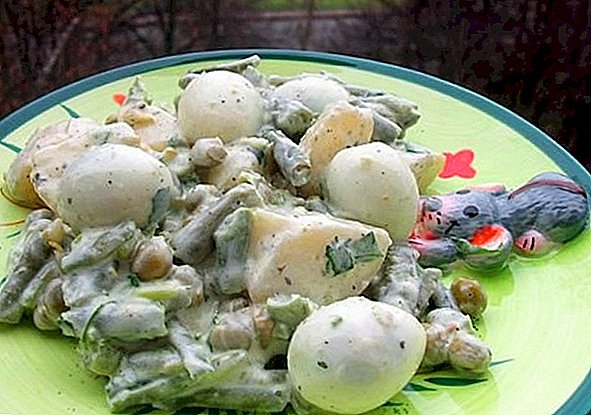
Another option: prepared and chopped leaves of sludge mixed with sardines from a jar, two medium-sized boiled potatoes, onion and seasoned with mayonnaise and sour cream. You can make a salad with fresh or pickled cucumbers, boiled eggs, etc .;
- in the first dishes. The recipe for green soup for 2 liters of water: smoked bacon with ribs and skin, cooked with several potatoes, add browned onions and chopped sow thistle, half tsp. zira. Three minutes to boil, then turn off and insist 5 minutes. You can add young nettle and sorrel to this soup. Thistle leaves (fresh, dried or salted) are also used to extinguish meat dishes.
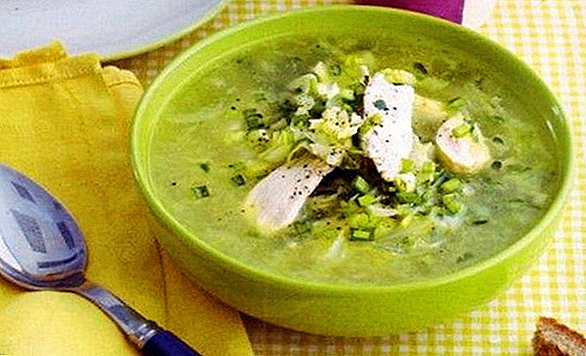
- in baking, as a filling: make envelopes from puff yeast dough, mix sliced sow thistle, parsley, dill, grated suluguni, put into envelopes, tweak edges and bake.
Garden sowing in dried form allows you to use its beneficial properties in the winter: greens are washed, dried, ground into powder, sieved through a sieve (100 g of dill powder is added to 500 g of powder to improve the taste). Sow thistle is also commonly salted for future use:
- for salting thistle (per liter jar) you will need: dill (2-3 umbrellas with seeds), black currant (7 leaves), garlic (4 cloves), salt (3 tsp.), horseradish (2 leaves). Horseradish to lay on the bottom, on top - washed and dried leaves of thistle (with spices, salt), mashed. Put the horseradish on top again. Capacity to close tightly and store in the refrigerator. This product is eaten as a side dish or added when cooking in meat dishes;
- salting for green soups. Thistle leaves (can be with nettle) finely chopped, sprinkled with salt (half-liter jar of thistle - 1 tbsp. With top) and tightly stuffed in a jar, corked and left for two days in a warm place. After top sleep with salt and store in a cool place.
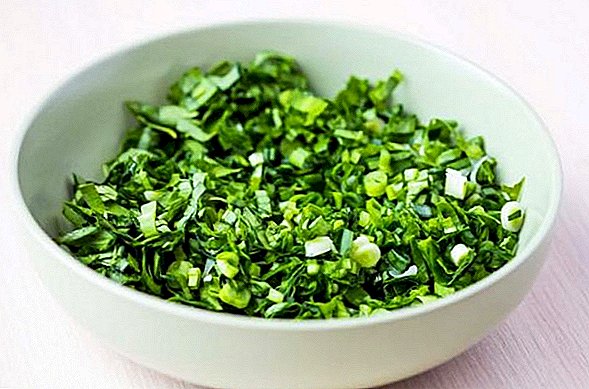
Did you know? Osote has the property to favor the growth of some cultivated plants. So, strawberries, growing next to chaff, has a more sweet and rich flavor. These plants also include currants, onions, corn, tomatoes, cucumbers, pumpkins, melons and gourds.
Osote: contraindications for use
Osote, despite its medicinal properties, has some contraindications.
The use of this plant is contraindicated in case of individual intolerance to children under the age of three years. It is necessary to refrain from the use of osota for pregnant women (sostovy honey is not contraindicated). Breastfeeding breast milk, you can drink tea from the broomstick (but no later than 40 minutes before feeding the baby).
Important! When collecting a crawl, it is better to wear gloves (this will protect against thorns on the leaves and the stem). It should be remembered that the juice of sediment irritates the mucous membranes, so you should avoid getting it into the eyes or on the skin of the hands (so as not to accidentally scratch the eyes). After collecting the bilge, wash your hands with soap and water.






